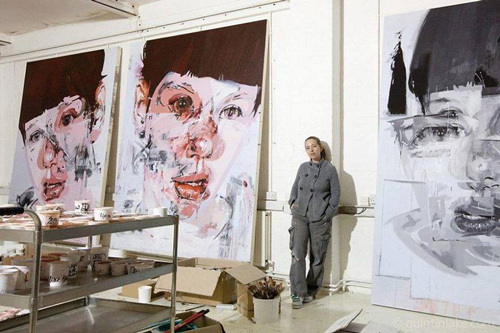
“Excellence is an art won by training and habituation. We do not act rightly because we have virtue or excellence, but we rather have those because we have acted rightly. We are what we repeatedly do. Excellence, then, is not an act but a habit.” – Aristotle
“Every artist dips his brush in his own soul, and paints his own nature into his pictures.” – Henry Ward Beecher
“This world is but a canvas to our imagination.” – Henry David Thoreau
Paradoxically, the evolution of the very technologies that predicated white, clean and neat Modernism is heralding its demise. The continuing development of virtual technologies is exposing architecture’s inertness. We need to look outside our discipline to find new ways of creating and judging the potential new architectures of the Twenty-First Century. Knowledge of the tactics and protocols of space making within Surrealism gives us insight into what these architectures might be like.
Most architects, like most of the public, confuse funny shaped objects and buildings with the word “Surrealism”. Parametricism is not intrinsically Surreal. The Surrealist odyssey has encompassed many of the key conceptual drivers of architecture – the body, the house and the city. The Surrealists also understood that the differing points of view of observers changed the meaning of spaces and, further, if bodies utilized prosthetics like suits, masks and optical devices, then architectural space changed. They also saw the house/studio as a repository of personal meaning and iconography, a series of fractal thresholds containing our thoughts and ways of seeing the world from erotic pleasures to deepest fears – a psychic cabinet of curiosities. The city, they saw, as a massive engine of chance throwing up possibilities of love, strange juxtapositions of ideas and symbols that were ever-changing.
First year students will develop a proposal for a studio, archive, gallery, livings spaces and gardens for two artists – for Anthony Gormley and Jenny Saville (both artists work with the body in space), and their assistants on the site of Vicarage Avenue, Blackheath, Royal Standard – a cutting in the urban fabric under which runs a tunneled railway line. Students will work from a classic surrealist painting as a primer for their imagination.
Second year students will negotiate appropriate briefs with Neil and Phil.
References:
Neil Spiller Architecture and Surrealism, Thames and Hudson 2016
Neil Spiller, Visionary Architecture, Thames and Hudson 2007
Sarane Alexandrian, Surrealist Art, London and New York, 1970
André Breton, Manifestoes of Surrealism, trans. Richard Seaver and Helen R. Lane, Ann Arbor, MI, 1972
Italo Calvino, Invisible Cities [1972], trans. William Weaver, San Diego, New York, London, 1974
Jennifer Mundy (ed.), Surrealism: Desire Unbound, London, 2001
Nan Ellin (ed.), Architecture of Fear, New York, 1997
Haim Finkelstein (ed. and trans.), The Collected Writings of Salvador Dalí, Cambridge, 1998
Arie Graafland, Architectural Bodies, ed. Michael Speaks, Rotterdam, 1996
Lewis Kachur, Displaying the Marvelous, Cambridge, MA, 2001
George Melly, Paris and the Surrealists, London, 1991
Thomas Mical (ed.), Surrealism and Architecture, London and New York
Colin Rowe and Fred Koetter, Collage City, Cambridge, MA, and London, 1978
Robert Venturi, Complexity and Contradiction in Architecture, New York, 1966
Anthony Vidler, The Architectural Uncanny: Essays in the Modern Unhomely, Cambridge, MA, 1992